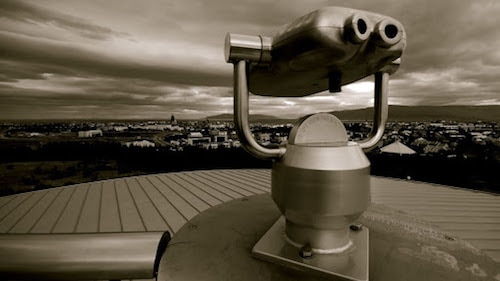Geoffrey Moore, the best-selling author of “Chasing the Chasm” and a respected marketing consultant and innovations expert, joined us to discuss how companies can thrive amid the COVID-19 crisis. Here, in the first of a three-part series, Moore encourages companies to reflect on what they can do to best connect with their most-passionate customers. He also references Salesforce’s management tool, the V2MOM, which streamlines the alignment of employees around their vision and values, along with the methods, obstacles, and metrics for achieving them.
The following are excerpts from our conversation with Moore, in his words. They have been lightly edited for content and clarity.
It’s time to get scrappy
We all made annual V2MOM plans in January and we’re now looking at them, asking what was this all about? It starts with vision and values: Where are you trying to get? What do you want to exemplify in the way you get there? In a pandemic, you still want to reiterate your vision and your values because your reason for existing has not changed. But everything else in that process — the methods, obstacles, and measures — are all different now.
What’s important for your organization — for your employees, your customers, your partners, your whole ecosystem — is you restate your mission and then get scrappy. The scrappiness is less scary if you are clear about your vision, values, and mission. Recenter around these principles … then even when you make mistakes you make them with a good heart.
Move beyond conventional solutions
The crisis actually has a big impact on overall adoption of innovation, but not because people become more visionary or more enthusiastic. What happens is the pragmatist community, which normally is a wait-and-see community, has now been put under notice. A number of things have gone very, very badly for them. And so they’re looking to fix a bunch of broken processes. If your technology can align with a broken process, you actually can excel rate adoption in a crisis because people come toward your solution. Not because people are early adopters, but because their conventional solutions don’t work anymore. And they need help.
And so the key to that game is something we call the whole product. Meaning: when you target one of those problems, you’ve got to help the customer get all the way to the finish line. You can’t just ship your product and wish them good luck. So your whole company has to sort of reprioritize around a smaller group of customers, a smaller set of use cases, but take them all the way to a solution.

In a crisis your path to success may need
to change entirely. [Photo: Flickr/i_udai]
There is no data
Normally the early majority has a very clear decision process when it comes to anything disruptive. They say, “I’ll do it when I see other people doing it.” That creates a kind of an inertial preference for the status quo, and an inertial resistance to the next big thing. Well, when a crisis hits, it breaks through that inertial curtain. People are now running everywhere, hither and yon. Introduce a disruptive offer at that time and make it relevant to the problems they’re facing. Then the speed of adoption can be remarkably quick. Because people have gone, “Holy smokes, we’ve got to do something. Let’s do it.” There’s a temptation to say, “Well, we don’t have enough data. Our machine learning algorithms aren’t up to date. We should just hunker down and kind of wait.” That’s wasting a crisis. In a crisis there is no applicable historical data! That’s not scrappy. That’s actually fearful of the work that needs to happen.
The restaurant and retail industries
It’s easy when you look at restaurants and retail because they are facing two different problems that look very similar. Both have to stop the bleeding in any way possible. For restaurants, there have been a bunch of layoffs, but they might also be saying, “Wait a minute, we have a food supply chain. All of our food suppliers need an outlet. And, by the way, we have customers who like our food.” So this whole, “Turn your restaurant into a food truck and do drive-by pickup,” I mean, it’s not fabulous, but it’s scrappy, right?
The restaurant is going to want to try to reconstruct its past existence. It doesn’t want to say, “You know what, we should be in the food truck business. This is the new thing.” They want to say, “No, our role in the community is to be a place that people come to have good times, special food.”
Now contrast that with retail. So retail, in some ways, is similar, right? But what we’re learning is we actually prefer to buy stuff online. And so the retailer cannot afford to go back to the old normal because that normal is getting abandoned, not completely, but at least partially. They’ve got to invent a new normal, which has an ecommerce element built into it and maybe takes advantage of their storefronts somehow. And that’s a very different asset than a restaurant just trying to get back on their feet.

The restaurant industry may return to the “old normal” more
than other industries [Photo: Flickr/Shocking Wonder]
If it ain’t broke …
For a restaurant, it’s really just about getting back in. There was nothing obsolete about what they were offering. But, I think maybe the innovation might be in the supply chain. How do I keep my supply chain engaged? How do I keep it active? How do I think about that? I don’t. I’m not going to change my menu. Know whatever you were doing was fine.
Meanwhile, retail was on notice anyway. Amazon had put retail on notice. And I think this has only intensified that existential threat. So I think retail is very much in the business of saying, “We need to go back to our vision and values.” Do we have to be brick and mortar?
Thirty years ago, the disparity between a consumer packaged goods brand and a channel like Target or Walmart was miles apart. Now, with things like the Apple Store, the channel and the product brand might be the same brand or at least much more closely aligned. That’s the kind of innovation I think we’re going to see.
For more content, tools, and tips to help your business thrive in the current climate, visit Work.com.
[Thumbnail photo credit: Flickr/Vestman]




























